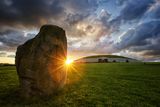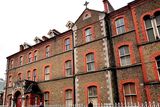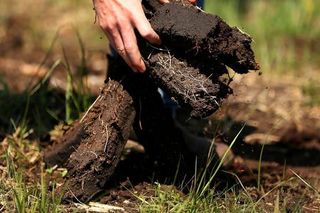Doubt cast over suggestions incestuous ‘god-kings’ ruled Newgrange during Neolithic Ireland



New research has cast doubt on suggestions an incestuous social elite ruled over the people who built Newgrange 5,000 years ago.
A paper, written by researchers at University College Dublin (UCD), has questioned the belief that burial within the “mega” passage tomb of Newgrange was the preserve of kings and other dignitaries who represented a dynasty that practised incest.
Such claims followed a study in 2020 that suggested evidence of incestuous unions at the site.
Today's News in 90 Seconds - June 24th
A study of the DNA of an adult male buried there revealed he had been born of an incestuous union. His parents were either siblings or parent and child.
The finding led the research team at the time, headed by Trinity College Dublin, to speculate that the elite associated with the monument practised incest as a way of maintaining a dynastic bloodline.
This implied he was among a ruling social elite akin to the similarly inbred Inca god-kings and Egyptian pharaohs.
But now, in findings published in the journal Antiquity, researchers say that the ancient genome of the adult male revealed a “rare case of incest, which led to claims in 2020 that the individual was a high-status ruler, with press coverage dubbing them a ‘god-king’”.
Associate Professor Jessica Smyth from UCD School of Archaeology. Photo: UCD
Associate professors Jessica Smyth and Neil Carlin at UCD School of Archaeology point out that no other incestuous unions have been identified in Neolithic Ireland and Britain, and say there is a lack of evidence for inbreeding across prehistoric Europe.
They also say the evidence found at the site does not support the existence of a “king” of Newgrange or any hereditary power or dynasty with a shared ancestry.
“People were definitely being selected for burial in passage tombs – the whole community does not end up in these monuments. However, we don’t know the reasons behind this selection,” Professor Smyth said.
“Unlike today, bodies don’t tend to be buried ‘whole’ or ‘intact’ in this time period. Before they end up in megalithic monuments, bodies are broken down, sometimes cremated and even circulated around their communities
Associate Professor Neil Carlin from UCD School of Archaeology. Photo: UCD
.”
Professors Smyth and Carlin argue that these conclusions relied heavily on unsuitable comparisons with hierarchical societies where incest was limited to ruling families, such as in ancient Egypt, while ignoring examples of incest in non-elite or egalitarian communities.
“A one-off example of incest is a shaky foundation on which to reconstruct an elite, let alone a specific social [hierarchy],” the authors said.
Newgrange is believed to have been built by a farming community that prospered in the Boyne Valley, Co Meath, about 5,000 years ago.
It is far more likely, they argue, that rather than being reserved for elite rulers or a ruling dynasty, the tombs at Newgrange were places where people made their kin through a range of practices, including living, working and burying their dead together.
Join the Irish Independent WhatsApp channel
Stay up to date with all the latest news



















